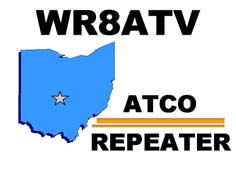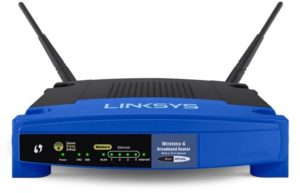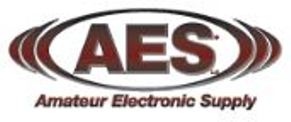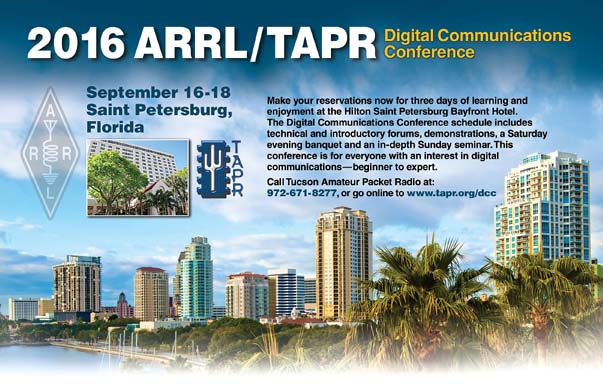One of the responsibilities of the Technical Coordinator in the Ohio Section is to submit something for the Section Journal. The Section Journal covers Amateur Radio related things happening in and around the ARRL Ohio Section. It is published by the Section Manager Scott – N8SY and articles are submitted by cabinet members.
Once my article is published in the Journal, I will also make it available on my site with a link to the published edition.
You can receive the Journal and other Ohio Section news by joining the mailing list Scott has setup. You do not need to be a member of the ARRL, Ohio Section, or even a ham to join the mailing list. Please sign up!
If you are an ARRL member and reside in the Ohio Section, update your mailing preferences to receive Ohio Section news in your inbox. Those residing outside the section will need to use the mailing list link above.
Updating your ARRL profile will deliver news from the section where you reside (if the leadership chooses to use this method).
Go to www.arrl.org and logon.
Click Edit your Profile.
You will be taken to the Edit Your Profile page. On the first tab Edit Info, verify your Email address is correct.
Click the Edit Email Subscriptions tab.
Check the News and information from your Division Director and Section Manager box.
Click Save.
Now without further ado…
Read the full edition at: http://n8sy2.blogspot.com/2016/07/july-issue-of-ohio-section-journal.html
THE TECHNICAL COORDINATOR
Jeff Kopcak – TC
k8jtk@arrl.net
 Hey Gang,
Hey Gang,
It’s been a busy month with ham radio holidays and national holidays. June was a great operating month for me as I had taken some time off work after Dayton. Since I really hadn’t been on the air the first half of the year, I spent a lot of time catching up. Heck April I made a total of three contacts. Bleh. I racked up 130 contacts including Field Day and 17 National Park activations. As usual I’m coming to the party late on NPOTA so I’m getting there. Our own Affiliated Clubs Coordinator John KD8MQ has given many updates in past editions of the Journal; check them out. More: https://npota.arrl.org/
I will tell you no matter what you do for Field Day, you’re always going to have a good time. If you get together with a club or some buddies, there are going to be good stories too. This year I took a different approach and decided to operate as a 1D station. Still had a good time. It gave me a chance to refresh my memory and practice using the Digital Signal Processing (DSP) and filtering features of my radio. As one would expect, there were stations all over the place. The bands weren’t that great either. I would hear a station but not clearly. I used different Automatic Gain Control (AGC) settings, Noise Reduction, filters, Passband Tuning (PBT), the whole nine yards. If I wasn’t hearing much scanning around, I would go work on something else and come back later to work more stations. In total made 30 contacts mostly on 40m from the home QTH.
The following weekend was Canada Day and the Independence Day holiday weekend. First up was the Radio Amateurs of Canada (RAC) Canada Day contest on July 1st. Since I’m a station outside Canada, the exchange was RST and serial number. The serial number was the number of Canadian stations worked during the contest. I worked 14 stations total over the 24 hour contest.
Then (of course) starting Friday morning was the 13 Colonies Special Event. There is one station in each of the 13 original colonies and two bonus stations. Bonus stations are Philadelphia where independence was declared and England for the “British Standard” contact. Things were going well for me. I started out working 9 stations on Friday night and 5 on Saturday morning. Then nothing. The British bonus station was eluding me. I kept trying when they were calling on sideband but they never came back to me or by the time they went through the numbers and got to 8 – they were down in the noise. It wasn’t looking good. In literally the 11th hour, I finally made contact with England on PSK for my clean sweep! I’ll be sending away for my certificate and sending out QSL cards soon. If you worked any of the 13 colony stations, please support them by making a donation or sending in for a certificate. Many stations took time out of their holiday weekend to put on another successful event. More: http://www.13colonies.info/
Last month I mentioned the Portage County Amateur Radio Service was going to have an Earth-moon-earth presentation for their July meeting. I’ve never experienced or knew anyone that worked EME so this was a presentation I did not want to miss. It was a bit of a drive in rush-hour traffic from downtown Cleveland. Nonetheless, food was great and it was an excellent presentation. Tony WA8RJF talked about the properties and theories involved making EME contacts, early days of EME needing monster arrays with gain antennas and rotor controls the size of two truck-beds –in one case. Then he talked about JT65 being the game changer to make EME communication more accessible to regular hams. The majority of my HF contacts are JT65 so a lot of it hit home for me. JT65 was originally created for EME but later adapted to HF and has become the second most popular digital mode. Thanks to Tony and PCARS for allowing me to be a guest at their meeting.
 Speaking of modes I haven’t yet operated, the QSO Today podcast interviewed Art Towslee WA8RMC of Westerville who is heavily involved with ATV (Amateur Television, sometimes called Fast Scan TV). ATV uses video and audio much like a commercial broadcast station. In many ways you are operating from your own studio with a video camera, microphone, lights, or other video sources. In the podcast they about Art’s history, knowledge, and involvement in projects to move ATV forward using Digital TV standards. With the introduction of Digital TV, quadcopters and 4K resolution, ATV is becoming popular once again. Slow Scan TV in contrast is sending a single still image over the air. More: http://www.qsotoday.com/podcasts/wa8rmc and https://atco.tv/
Speaking of modes I haven’t yet operated, the QSO Today podcast interviewed Art Towslee WA8RMC of Westerville who is heavily involved with ATV (Amateur Television, sometimes called Fast Scan TV). ATV uses video and audio much like a commercial broadcast station. In many ways you are operating from your own studio with a video camera, microphone, lights, or other video sources. In the podcast they about Art’s history, knowledge, and involvement in projects to move ATV forward using Digital TV standards. With the introduction of Digital TV, quadcopters and 4K resolution, ATV is becoming popular once again. Slow Scan TV in contrast is sending a single still image over the air. More: http://www.qsotoday.com/podcasts/wa8rmc and https://atco.tv/
The TAPR Digital Communications Conference is coming up September 16-18 in St. Petersburg, FL. The list of speakers and forums haven’t yet been released but topics will likely include Software Defined Radios, digital voice modes (D-STAR, Fusion, DMR, P25, Codec2, FreeDV), digital satellite communications, APRS, and the like. More: https://www.tapr.org/dcc.html
 In a great article from ARS Technica, they talk about the Linksys WRT54GL router that is 11 years old and still making millions for Linksys. This router came out in 2005 but really had an ecosystem built around it. The router was Open Sourced making it easily modifiable and turning it into a much more powerful router. We hams have seen this first hand as these are one of the more popular models used in Mesh Networking. Linksys said they’ll continue to make the router while suppliers keep selling the parts; great news for Mesh users. More: http://arstechnica.com/information-technology/2016/07/the-wrt54gl-a-54mbps-router-from-2005-still-makes-millions-for-linksys/
In a great article from ARS Technica, they talk about the Linksys WRT54GL router that is 11 years old and still making millions for Linksys. This router came out in 2005 but really had an ecosystem built around it. The router was Open Sourced making it easily modifiable and turning it into a much more powerful router. We hams have seen this first hand as these are one of the more popular models used in Mesh Networking. Linksys said they’ll continue to make the router while suppliers keep selling the parts; great news for Mesh users. More: http://arstechnica.com/information-technology/2016/07/the-wrt54gl-a-54mbps-router-from-2005-still-makes-millions-for-linksys/
On a sad note that hits close home, especially those in Cleveland. At  the end of July, Amateur Radio equipment retailer Amateur Electronic Supply (AES) will be closing for good. We all have stories about the long time retailer. I liked browsing the show room and playing with the radios on display. They were always helpful to their customers. It’s sad to see a retailer leave and friends lose their job. 73’s to the AES crew. You will be missed. More: http://www.arrl.org/news/amateur-electronic-supply-closing-after-59-years-in-business
the end of July, Amateur Radio equipment retailer Amateur Electronic Supply (AES) will be closing for good. We all have stories about the long time retailer. I liked browsing the show room and playing with the radios on display. They were always helpful to their customers. It’s sad to see a retailer leave and friends lose their job. 73’s to the AES crew. You will be missed. More: http://www.arrl.org/news/amateur-electronic-supply-closing-after-59-years-in-business
That’s about it for this month. With the conventions going on in the state, everyone please stay safe. As I’m writing this a few days before the RNC, there are plenty of changes happening in Downtown Cleveland: unmarked SUVs, helicopters flying around, “Cell on Wheels” (COW, portable cell sites) popping up, temporary stages going up, and TV equipment trucks. My company has made previsions for us to work remotely. Those with a P25 digital trunked capable scanner in the Cleveland area will probably find most activity on the Ohio MARCS-IP (Multi-Agency Radio Communications) and GCRCN (Greater Cleveland Radio Communications Network) systems. The old MARCS 3.5 legacy system is going to be kept on-line as a backup to the MARCS-IP system. After the convention that system is expected to be fully shutdown. No definitive word on talk-groups to listen to but keep an eye to the Radio Reference Ohio forum and frequency database pages as things gear up.
Thanks for reading and 73… de Jeff – K8JTK
